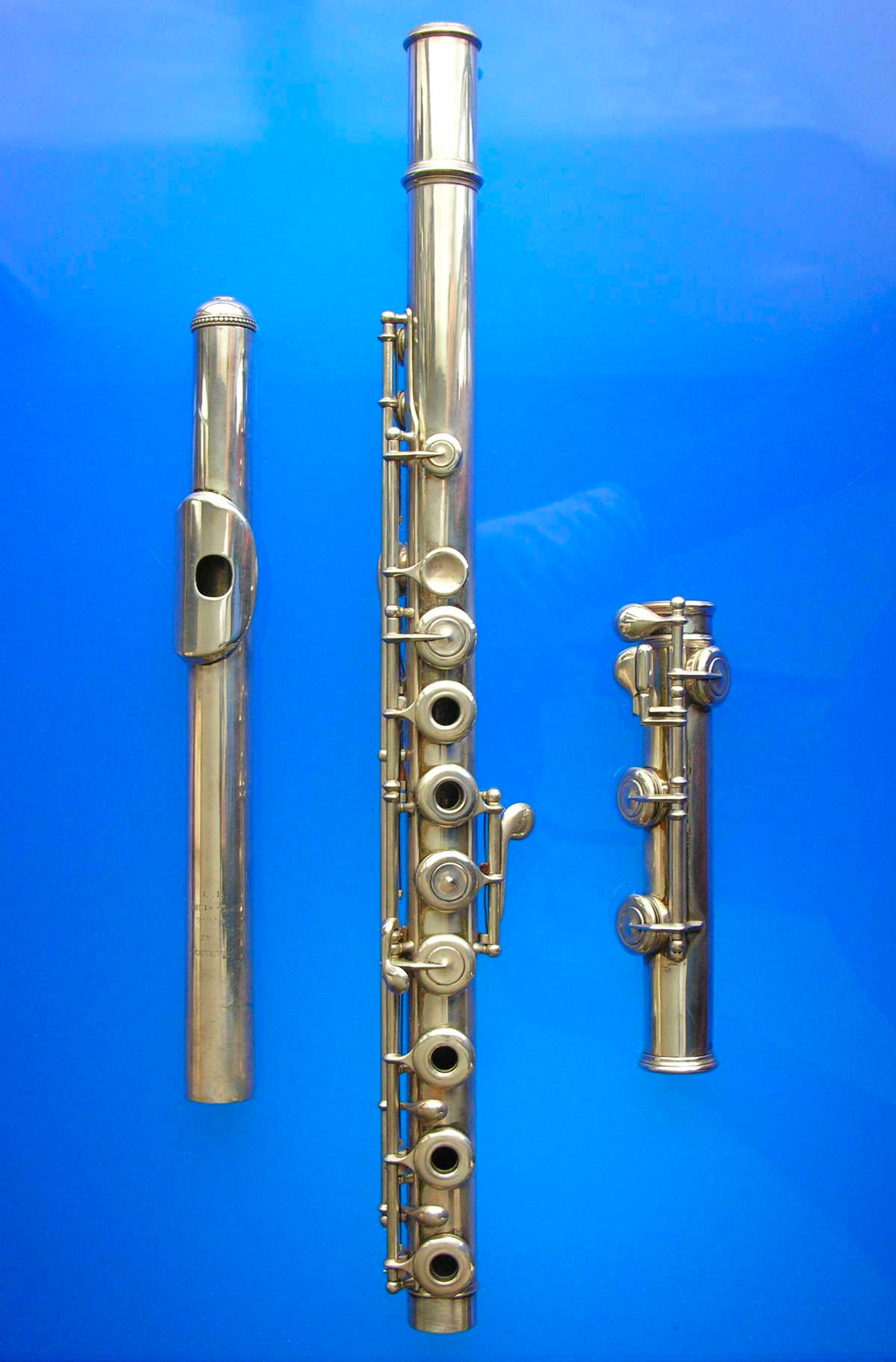Louis Lot #281
Louis Lot
Paris, France
Stamp: On headjoint only: L. L. / LOUIS-LOT/ PARIS/ 281/ BREVETÉ
Comments: This beautiful instrument displays the absolute simplicity of the Louis Lot flute. It took absolute genius to render Theobald Boehm’s lengthy ideas into the perfect simplicity of this flute. The original record exists for this flute, and reads: “15 Mai 1858. Doit Petiton à Paris Une flute Cylindrique, tubes et cléfs en argent descendant à l’Ut, avec boite velour bleu, No.(281)…………….365″”.” Thus we have here a flute of silver with a C foot, in a case with blue velour interieur, evidently ordered by Petiton (of Paris, at the instructor’s discount price of 365 francs, when the list price for Lot’s model 5 was 500 francs. Today, the case for this flute, which may be original, is stamped in gold on the top, “A. GELLE”. From Gelle, the instrument made its way to Mr. Vito Pascucci, former owner of the G. Leblanc Corporation. Prior to and just after Vito’s retirement, many instruments were discarded or donated to needy students. This flute was among the instruments to be discarded. The current owner rescued it from the dumpster and was given permission to keep it. This instrument weighs much less than any other flute we have weighed. At 322 grams (11.5 oz), it is 22 grams less than #1551, and 45 grams lighter than #742. The silver tubes are very thin. The headjoint is between 9-10 thousands of an inch, and the body about 13 thousands. This instrument to exemplifies the beautiful and rich tones for which Louis Lot has long been famous. This flute, Louis Lot’s 40th silver flute, would have been made for players and audiences more used to the old wooden sound.
Material: Made of silver, with silver lipplate. Steel springs. Gilt pad washers. Open hole grommets appear replaced with later Lot grommets, or they were made with an unusually large overhang into the open hole. Cork screw of turned wood with silver cap.
System: This is Louis Lot’s model 5, silver flute with C foot. Trill to the thumb B key. Dorus G#.
Condition: We have graphed the tone hole placement from this flute onto Boehm’s schema. As far as I can tell (and I find the schema confusing), this flute was made at A=438, just as one might expect. The headjoint has been cut an extra 3 mm.
Pitch: We have graphed the tone hole placement from this flute onto Boehm’s schema. As far as I can tell (and I find the schema confusing), this flute was made at A=438, just as one might expect. The headjoint has been cut an extra 3 mm. Plays well at 440.
Sounding Length: Current sounding length is 586 mm. with the headjoint all the way in.
Measurements: Embouchure wall 4.7 mm. Emb 11.75 x 10.2. Scale 220.5 mm
Weight: 322
Case: The case may very well be original, although the gold stamped name “A. GELLE”, and certainly the ridiculous strap lock, appear later. The flute fits perfectly in the case.
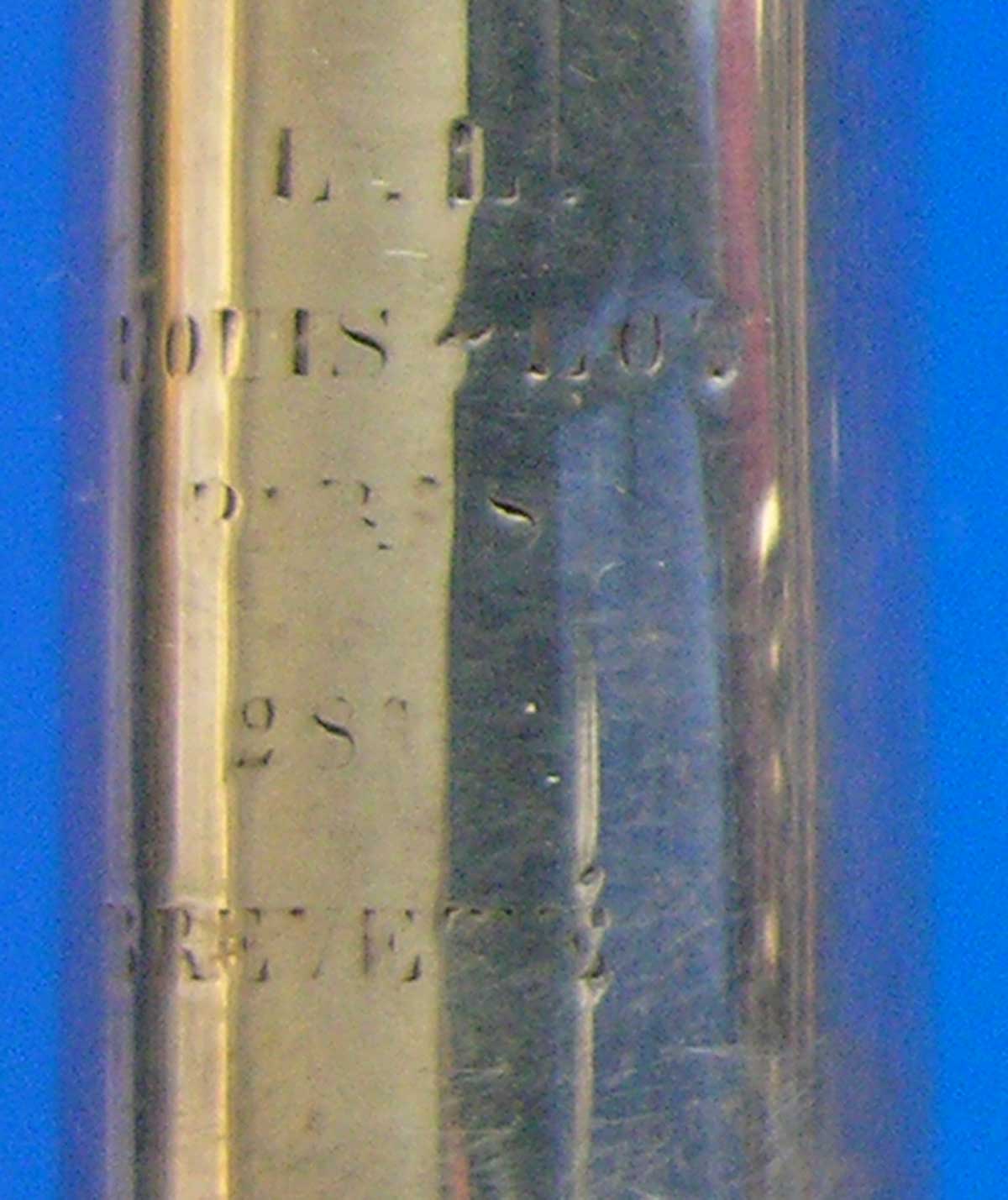
The entire headjoint has been heavily buffed, yet the number 281 is clearly visible.
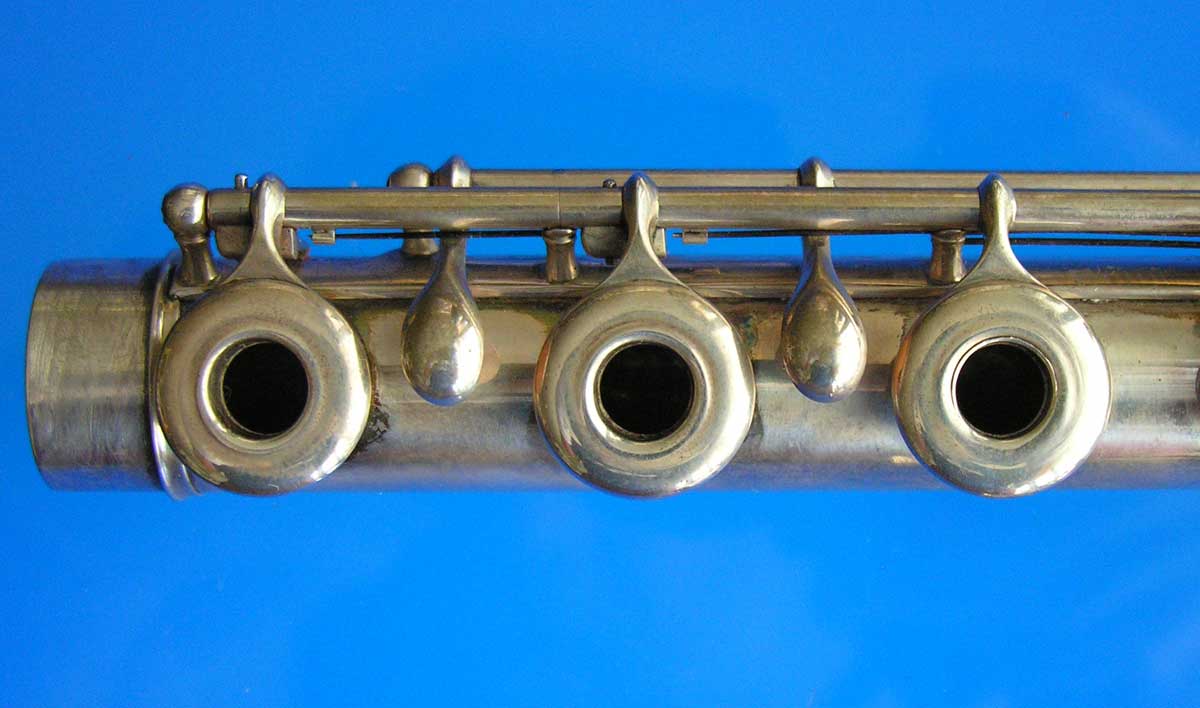
The right hand mechanism shows the extraordinarily effective simplicity of the Lot design.
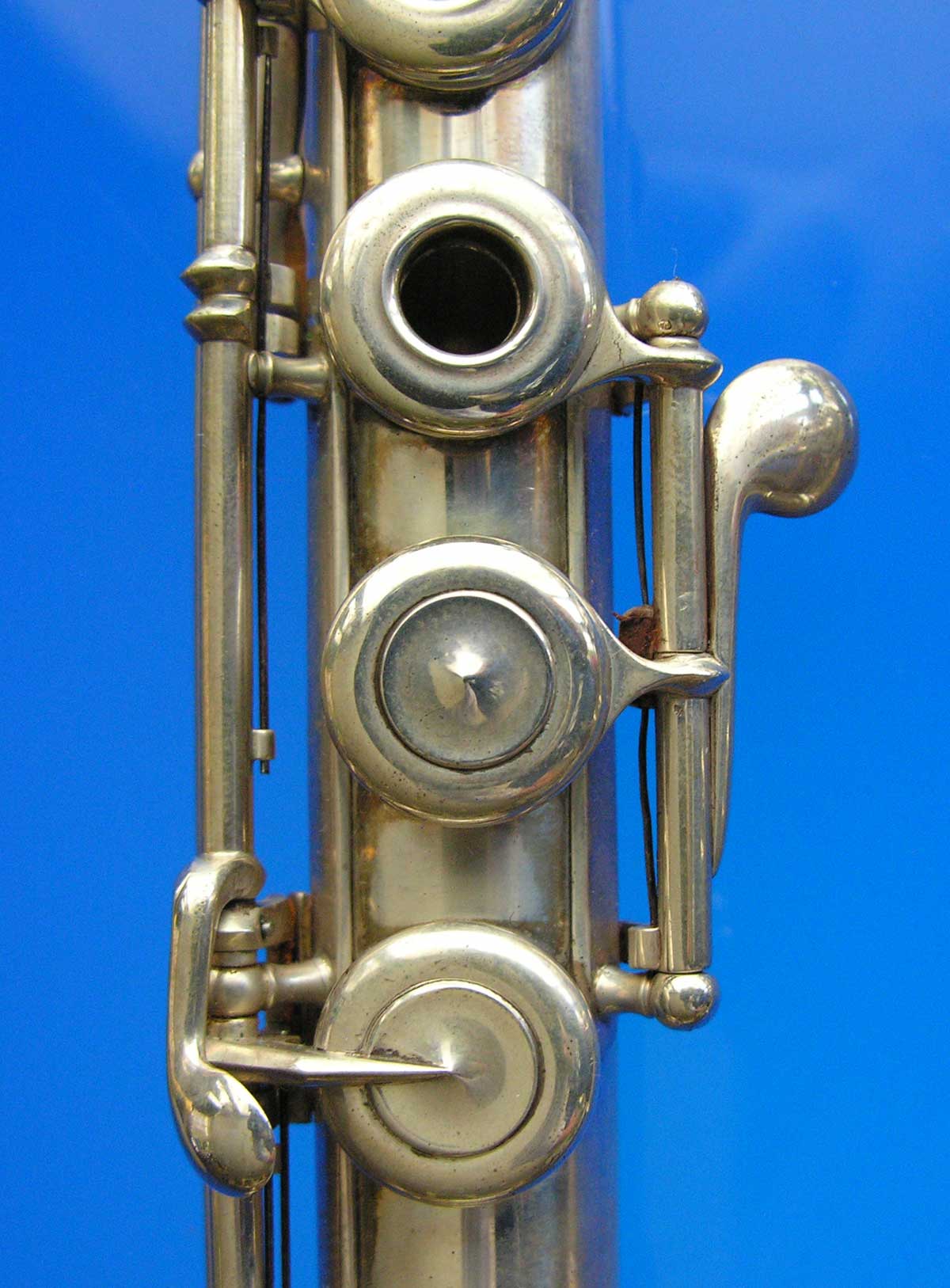
The Dorus G# was extremely clever. Cleverness was generally eschewed in favor of simplicity, and the side G#, as soon as it was invented, had a slight edge.
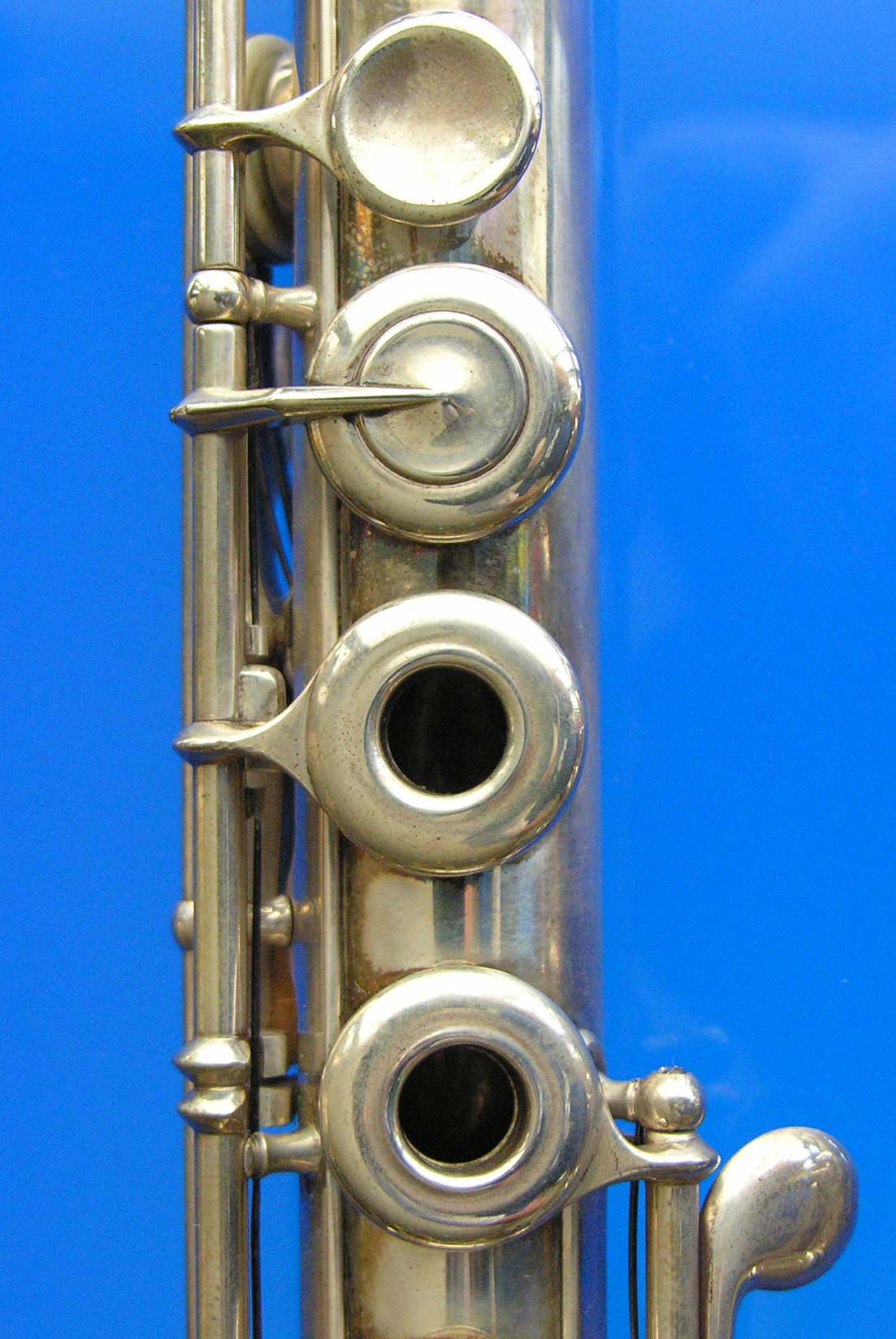
The keys on this flute are heavily worn from use, not from buffing, judging by the direction of wear.
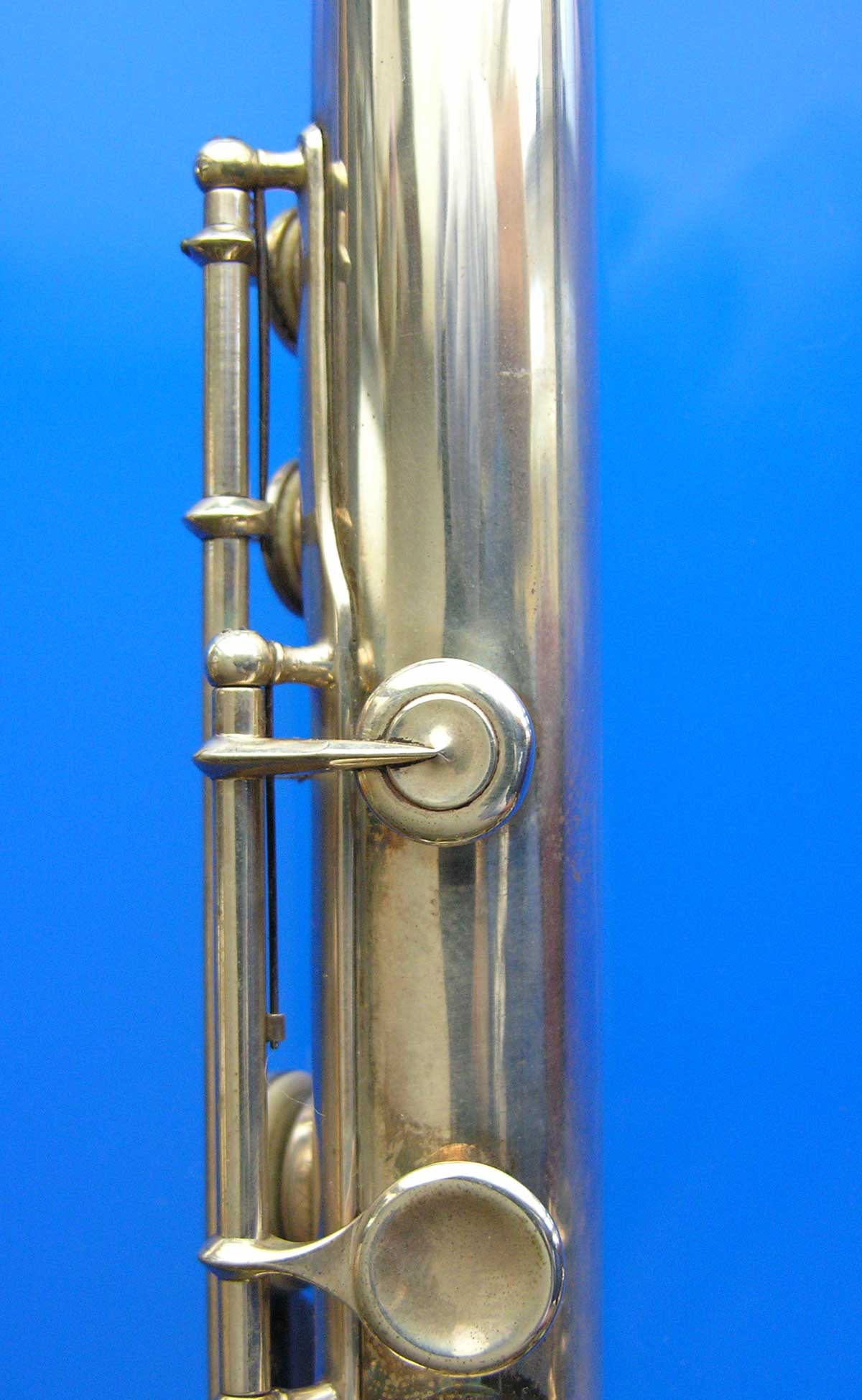
The body is unstamped, yet is clearly a very early Lot body. Of course, it has a one-piece strap.
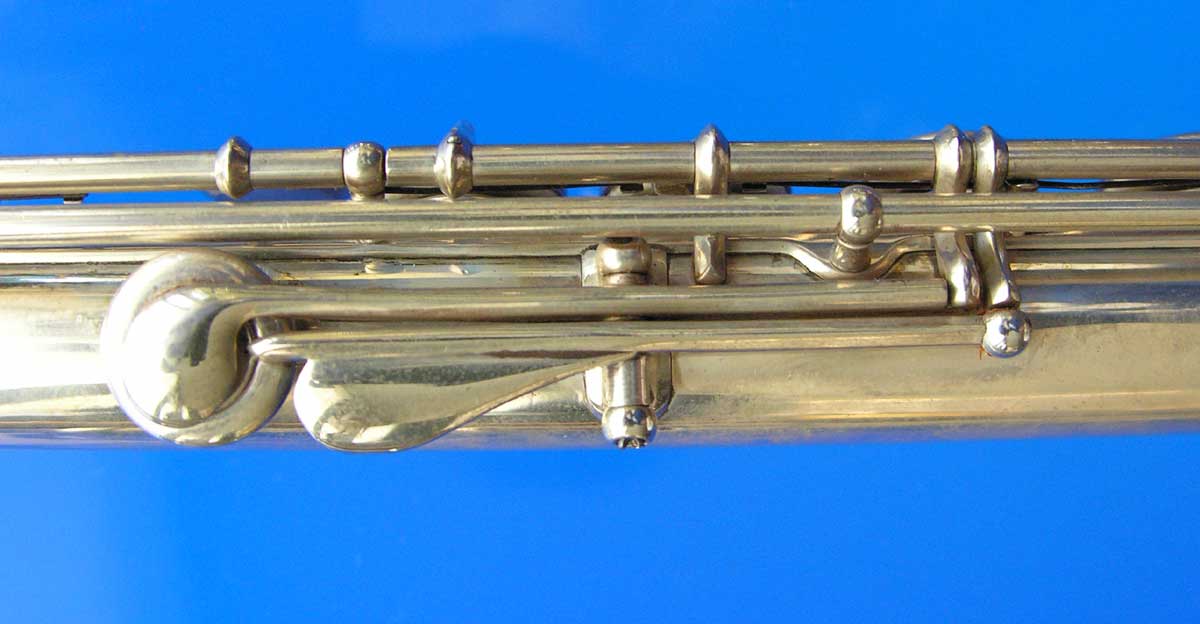
The thumb key retains the beautiful ball-end, which Lot introduced many years earlier on the Godfroy model conical flutes. This was eventually abandoned.
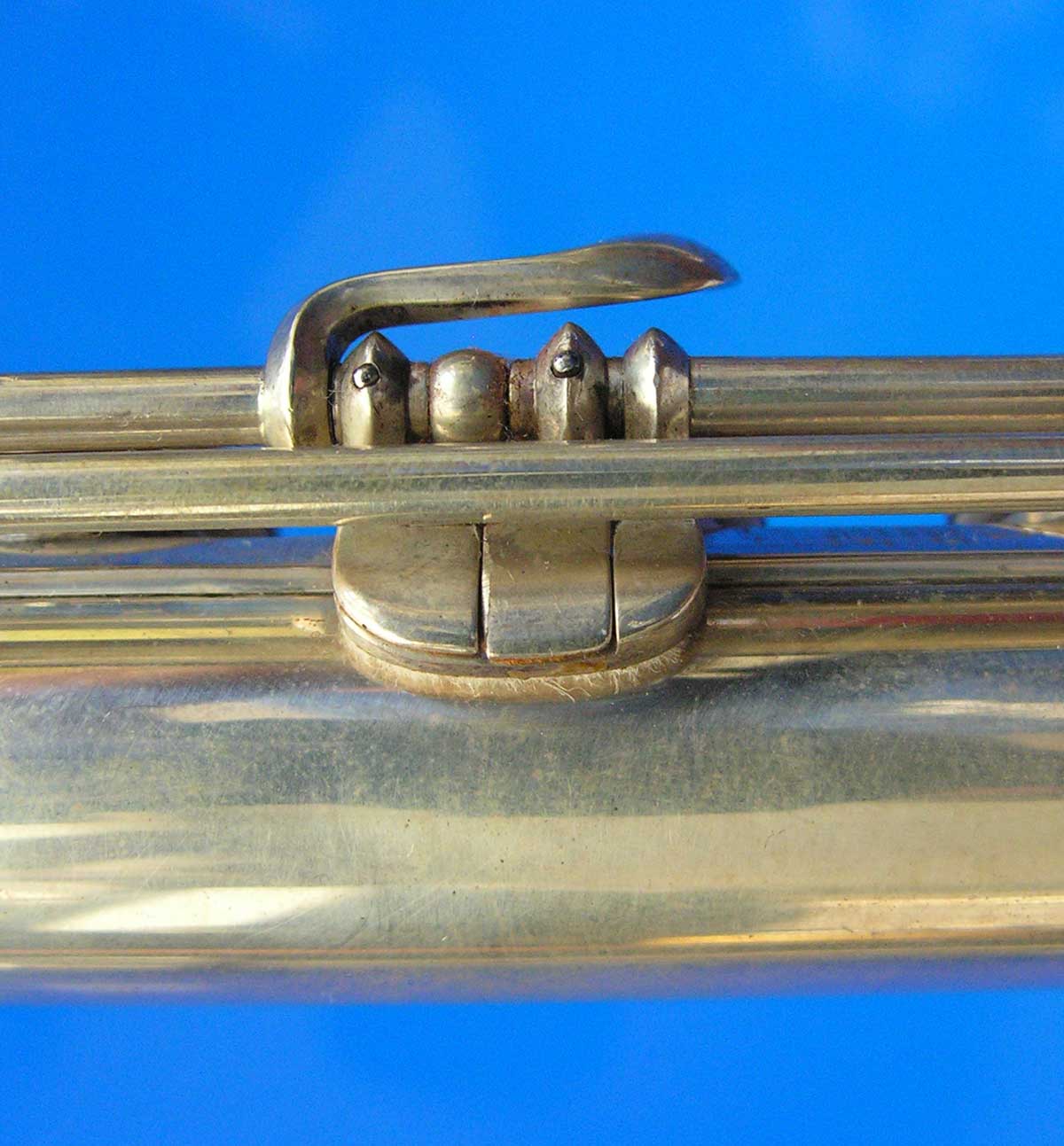
This sweet and early backclutch is remarkably undamaged, considering the love for buffing seen elsewhere on this flute.
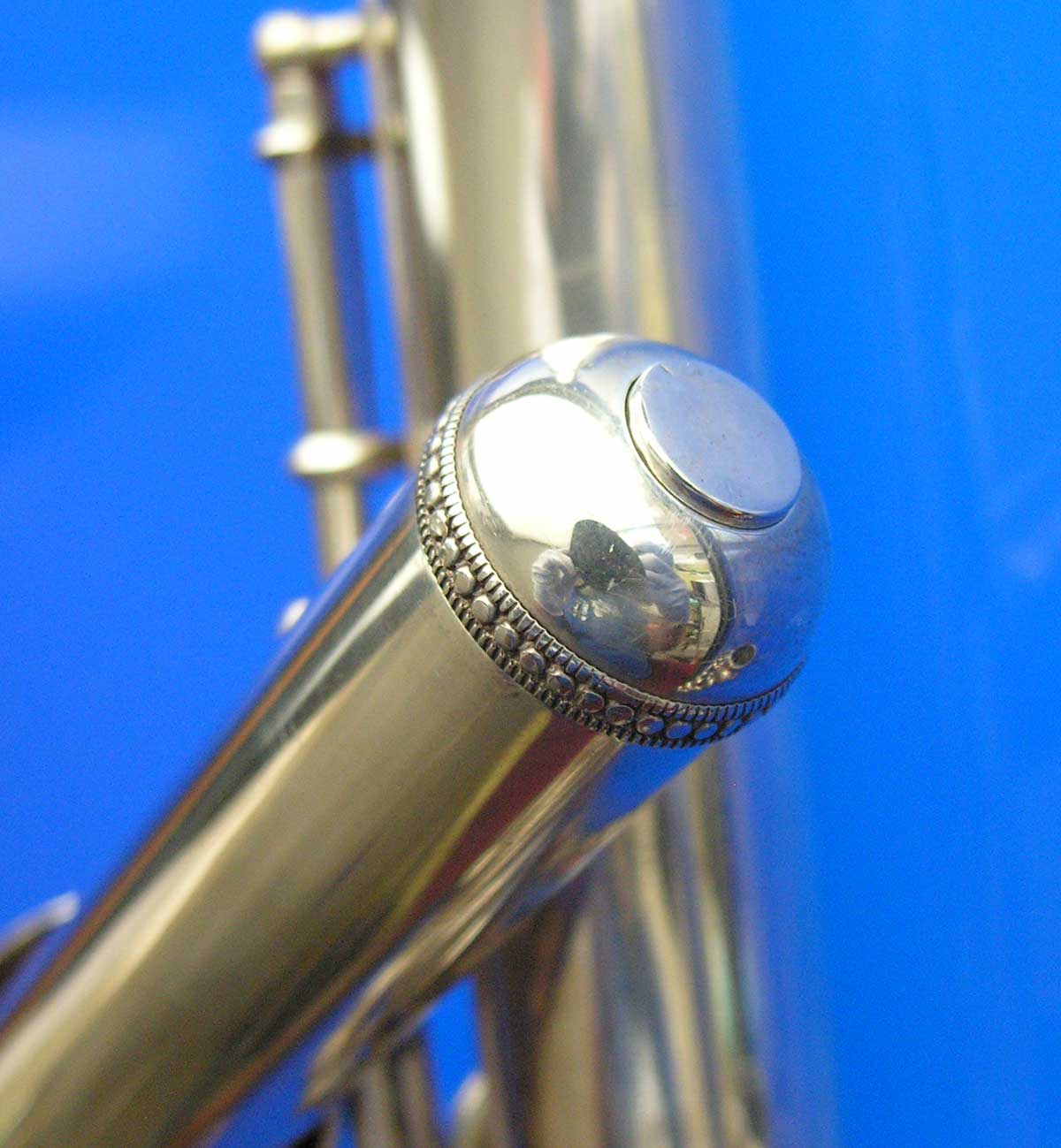
The crown is original, and uses the turned wooden corkscrew inside.
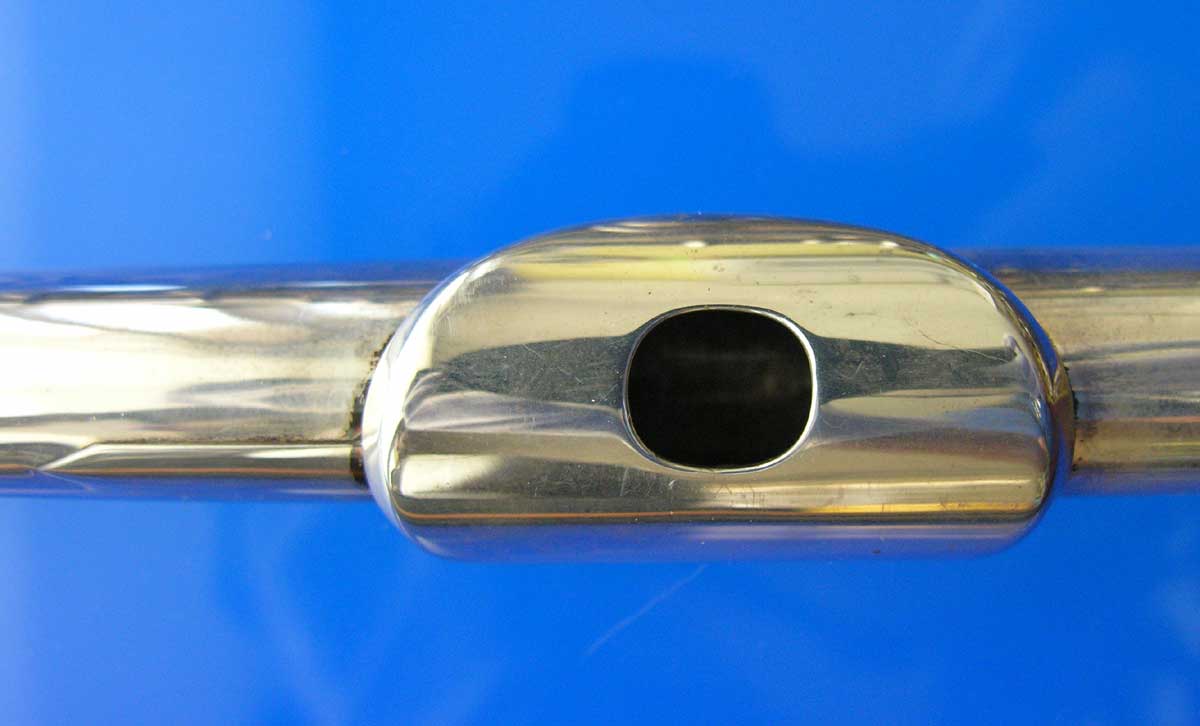
The lipplate and headjoint received a knock at some point, causing the seam to part ever so slightly. This has been repaired with a silver strap, and the lip was resoldered on, including some extra solder where the tube was slightly out of round. Everything looks original, nonetheless.
